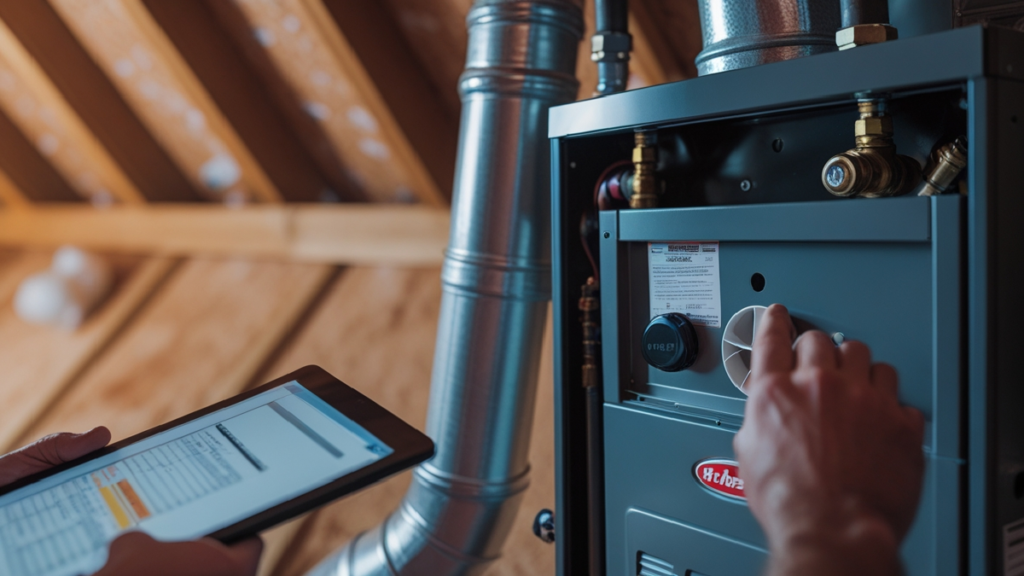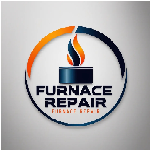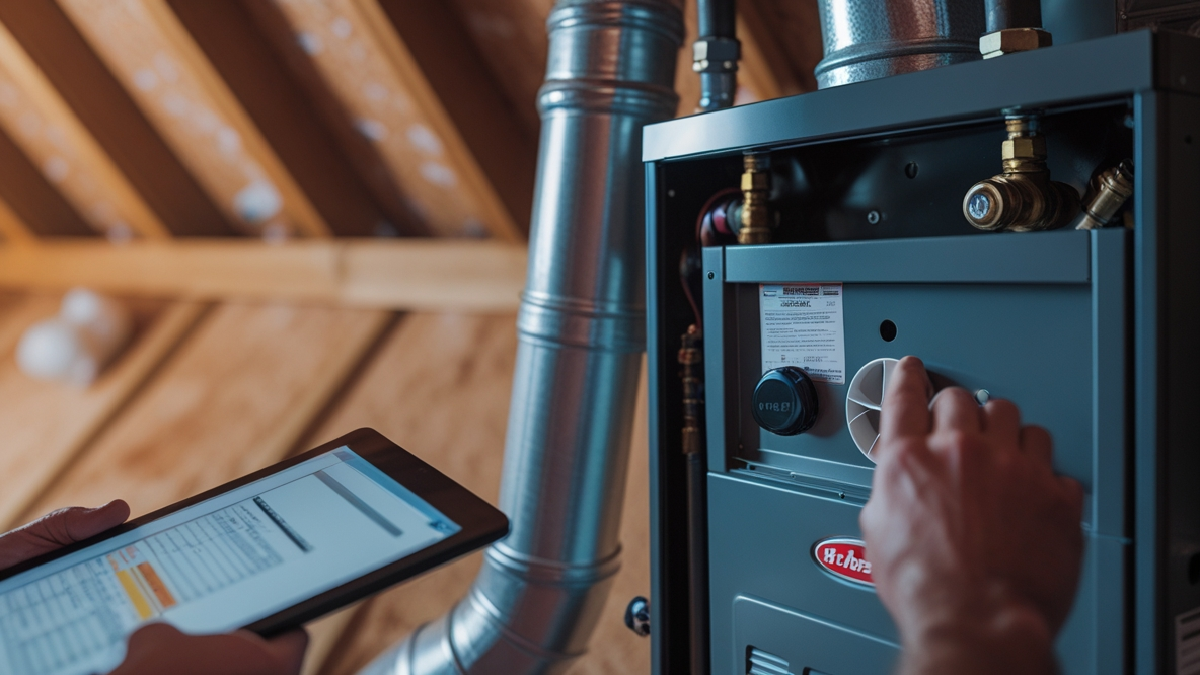Understanding the Fundamentals of High Efficiency Gas Furnace Venting Code Requirements
High efficiency gas furnaces have gained widespread popularity among homeowners and HVAC professionals due to their superior energy-saving capabilities and environmentally friendly operation. These advanced systems extract more heat from combustion gases, resulting in lower exhaust temperatures and the necessity for specialized venting systems.

Unlike traditional furnaces that vent through metal chimneys, high efficiency units typically utilize plastic piping such as PVC, CPVC, or polypropylene, which are resistant to corrosion and capable of handling condensate and acidic exhaust gases.
The core reason behind these specific venting code requirements is safety. Proper venting prevents dangerous leaks of carbon monoxide, a colorless, odorless, and potentially lethal gas produced during combustion. It also ensures the venting system remains durable and free from blockages, which could cause backdrafting or system failure.
These standards are enforced by local building codes, manufacturer specifications, and industry standards, all designed to protect occupants, property, and the environment.
High Efficiency Gas Furnace Venting Code Understanding the fundamental principles of high efficiency furnace venting involves recognizing the importance of correct material selection, installation practices, and ongoing maintenance.
It also requires awareness of the safety risks associated with improper venting, such as carbon monoxide poisoning, fire hazards, and structural damage. This section aims to provide a comprehensive overview of these foundational concepts, emphasizing why strict adherence to venting code requirements is essential for safe and efficient furnace operation.
High Efficiency Gas Furnace Venting Code By grasping the underlying safety and performance standards, homeowners and HVAC professionals can ensure that high efficiency gas furnaces are installed correctly, operate reliably, and remain compliant with all relevant regulations.
This knowledge forms the basis for making informed decisions about venting system design, material choices, and maintenance practices that uphold safety and efficiency.
Key Components of High Efficiency Gas Furnace Venting Systems
A thorough understanding of the main components involved in high efficiency gas furnace venting systems is essential for ensuring compliance and safety.
These systems are composed of several critical parts, each with specific requirements dictated by code standards. Proper selection, installation, and maintenance of these components are vital to prevent leaks, blockages, and other hazards that could compromise safety or system performance.
The primary components include intake pipes, exhaust pipes, vent connectors, and termination points. The intake pipe supplies fresh air necessary for combustion, drawing air from outside the building or a designated fresh air source.
High Efficiency Gas Furnace Venting Code The exhaust pipe, on the other hand, carries combustion gases safely outside, preventing the accumulation of dangerous gases within the living space. These pipes are typically made from plastics such as PVC, CPVC, or polypropylene because of their chemical resistance and ability to withstand the lower temperatures and condensate produced by high efficiency units.
Each component must meet certain standards to ensure durability and safety. For example, the vent termination points must be located at a safe distance from windows, doors, and other building openings to prevent the re-entry of exhaust gases.
Proper sealing and support are also mandated by code to maintain system integrity over time. The connection points between pipes should be secure and airtight, using approved fittings and sealants designed for plastic venting systems.
High Efficiency Gas Furnace Venting Code Understanding the specific roles and installation standards for each component helps ensure the entire venting system functions effectively and safely. This knowledge is crucial for compliance with local codes and for protecting occupants from potential hazards associated with venting failures.
Installation Guidelines for High Efficiency Gas Furnace Venting
Proper installation forms the foundation of a compliant and safe high efficiency furnace venting system. It involves meticulous adherence to guidelines that ensure the system operates as intended, remains durable, and complies with all relevant codes.
High Efficiency Gas Furnace Venting Code HVAC technicians and contractors must follow these best practices to prevent issues such as leaks, blockages, or improper venting that could pose safety risks.
One of the most critical aspects of installation is maintaining the correct slope of vent pipes, typically a minimum of 1/4 inch per foot. This slope facilitates condensate drainage, preventing pooling and potential corrosion or blockages.
High Efficiency Gas Furnace Venting Code Support brackets should be installed at regular intervals to prevent sagging, which can lead to condensate buildup or disconnection. Clearances from combustible materials, electrical wiring, and other building components must be maintained according to manufacturer specifications and local codes, often requiring non-combustible shields or barriers around the vent pipes.
Connections between sections of vent pipe need to be secure and airtight. This is achieved using approved fittings and sealants that are compatible with plastic venting materials. Proper sealing prevents leaks of combustion gases and ensures the system remains airtight over its lifespan.
The termination point, where the vent pipe exits the building, must be installed at the correct height and location, adhering to setback requirements from windows, doors, and ventilation openings. This prevents the re-entry of exhaust gases into the building and minimizes the risk of nuisance or safety hazards.
High Efficiency Gas Furnace Venting Code Following these installation guidelines ensures the venting system remains effective, durable, and compliant with safety standards. Proper installation not only enhances safety but also optimizes furnace performance and longevity, providing peace of mind for homeowners and peace of mind for professionals ensuring code compliance.
Material Standards and Compliance for Venting Components
The materials used in high efficiency gas furnace venting are subject to strict standards that guarantee their performance, safety, and longevity. Plastics like PVC, CPVC, and polypropylene are commonly used because they are lightweight, corrosion-resistant, and capable of handling the lower temperature exhaust gases and condensate produced by high efficiency units.
High Efficiency Gas Furnace Venting Code Material standards are outlined by organizations such as ASTM International, which specify the physical and chemical properties necessary for venting components.
For example, ASTM D1785 covers PVC pipes suitable for venting, ensuring they meet criteria for impact strength, chemical resistance, and dimensional stability. Compliance with these standards is essential to prevent failures that could lead to safety hazards such as leaks or pipe deterioration.
Manufacturers must provide certification and documentation demonstrating that their venting products conform to applicable standards. Homeowners and HVAC professionals should verify these certifications before installation to ensure the entire venting system is compliant.
High Efficiency Gas Furnace Venting Code Using certified materials also helps ensure the system can withstand operational conditions such as temperature fluctuations, condensate corrosiveness, and mechanical stresses.
Adhering to material standards is a critical component of code compliance, safety, and system longevity. Proper material selection, backed by certification, ensures the venting system remains effective and safe throughout the lifespan of the furnace.
Safety Rules and Regulations for High Efficiency Furnace Venting
Safety is the paramount concern when installing and maintaining high efficiency gas furnace venting systems. The code requirements incorporate specific safety rules designed to prevent hazardous situations, including carbon monoxide poisoning, fire hazards, and system failures.
These rules encompass proper clearances, installation practices, inspection procedures, and ongoing maintenance protocols.
High Efficiency Gas Furnace Venting Code One of the most critical safety measures is ensuring vent pipes are properly sealed and supported. Leaks or disconnections can lead to dangerous buildup of combustion gases within the building. Regular inspections are recommended to identify early signs of deterioration, corrosion, or blockages. Addressing these issues promptly is essential for maintaining safety and compliance.
The placement of vent terminations must adhere to clearance requirements from windows, doors, and ventilation openings. This prevents the re-entry of exhaust gases, which could pose health risks
. Using approved materials and fittings resistant to condensate and exhaust gases is also mandated by code. Installing carbon monoxide detectors in strategic locations within the home provides an additional safety layer, offering early warning of venting issues.
High Efficiency Gas Furnace Venting Code Following these safety rules and regulations is not only a legal obligation but also a moral responsibility to protect the health and well-being of building occupants. Proper installation, regular maintenance, and adherence to safety standards ensure that high efficiency furnace venting systems operate reliably and safely over time.
Common Challenges and Troubleshooting in High Efficiency Venting
Despite meticulous planning and adherence to code requirements, venting systems can encounter challenges that compromise safety and performance. Common issues include blockages caused by debris, condensate buildup, or ice formation, as well as improper slope leading to poor drainage. Corrosion of vent components over time can also pose significant problems, especially in harsh environments.
High Efficiency Gas Furnace Venting Code Early detection through regular inspections is crucial. Signs of trouble include unusual noises, corrosion, visible damage, or poor furnace performance.
If blockages are suspected, clearing the pipes and ensuring proper condensate drainage is the first step. For corrosion or material degradation, replacing affected sections with compliant, durable materials is necessary. Addressing these issues promptly prevents hazardous situations such as carbon monoxide leaks or vent pipe failure.
HVAC professionals should educate homeowners on routine maintenance practices, including periodic inspections, cleaning, and prompt repairs. Proper troubleshooting not only extends the lifespan of the venting system but also maintains safety and efficiency.
Developing a proactive approach to venting system maintenance is essential for long-term safety and compliance.
Conclusion: Ensuring Compliance and Safety in High Efficiency Gas Furnace Venting
High Efficiency Gas Furnace Venting Code Adherence to high efficiency gas furnace venting code requirements is fundamental to ensuring the safety, efficiency, and durability of the heating system. From understanding the core components and installation practices to selecting compliant materials and following safety regulations, each aspect plays a vital role in creating a reliable venting system.
Homeowners, HVAC technicians, and contractors must prioritize compliance and safety to prevent hazards such as carbon monoxide leaks, vent pipe failures, and violations of building codes.
High Efficiency Gas Furnace Venting Code Remaining informed about current standards, following manufacturer guidelines, and performing routine inspections are essential steps for maintaining a safe and efficient venting system. This comprehensive approach not only protects property and health but also maximizes the energy-saving benefits of modern high efficiency furnaces.
High Efficiency Gas Furnace Venting Code By committing to these best practices, all stakeholders can ensure that high efficiency gas furnaces operate safely, reliably, and in full compliance with applicable codes and standards.
To learn more about local regulations and safety standards, check our detailed guide on the Minnesota furnace venting code for 2025.
For the latest updates and furnace maintenance tips, follow us on Facebook 👉 Your Page Name


Leave a Reply